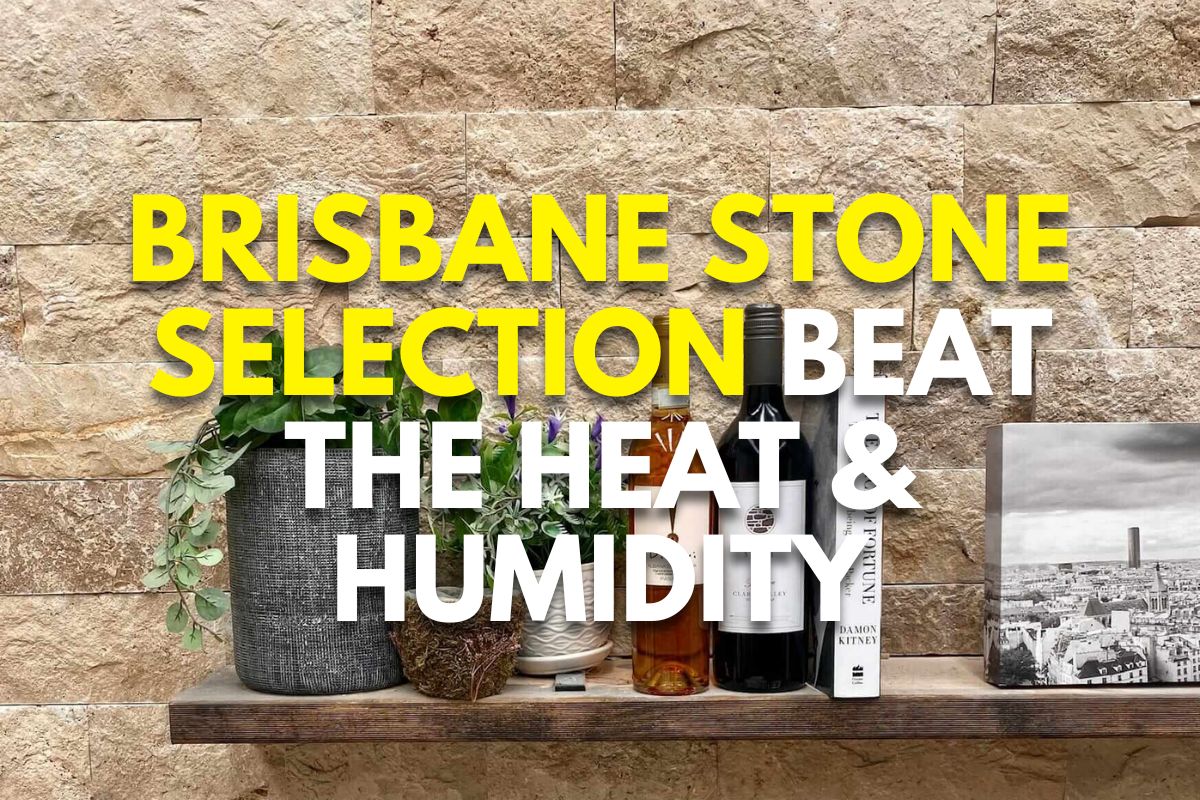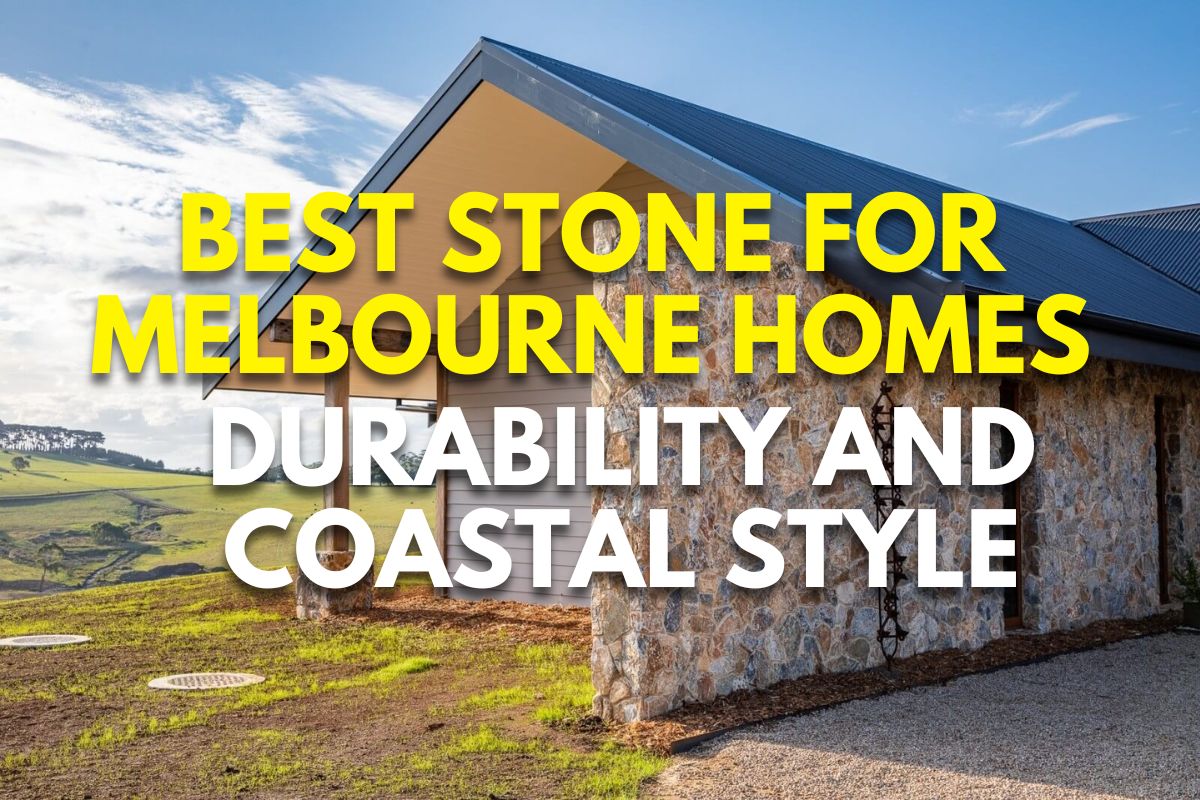Brisbane Stone Selection: Beat the Heat & Humidity
In Brisbane’s sweltering heat and stifling humidity, selecting the right building materials is crucial, yet many overlook the importance of choosing the appropriate stone.
Poor stone choices can lead to rapid deterioration and increased maintenance costs, frustrating property owners and diminishing the value of their investments.
This article guides you through the best stone options available that not only endure Brisbane’s harsh climate but also enhance the aesthetic and functional value of your property, ensuring long-lasting quality and satisfaction.
Climate Challenges in Brisbane
Brisbane is renowned for its challenging climate, particularly affecting construction and building materials due to its high temperatures, humidity levels, and intense UV exposure.
- High Temperatures: Brisbane experiences notably hot summers, with temperatures frequently soaring above 30°C. This extreme heat can compromise the integrity and appearance of building materials. Stones in particular need to be selected for their ability to withstand these temperatures without cracking, discolouring, or degrading over time.
- Humidity Levels: Alongside the heat, Brisbane’s high humidity levels pose a significant challenge. This moisture can seep into porous materials, leading to deterioration and mold growth. It’s essential to choose stones that are less porous and offer higher resistance to moisture absorption to maintain their structural integrity and aesthetic appeal.
- UV Exposure: The intense sunlight in Brisbane can cause significant UV damage to exposed surfaces, leading to fading and weakening of stones over time. Stones that are UV-resistant are crucial for maintaining their colour and structural integrity, especially in outdoor applications.
- Salt Tolerance: Proximity to the coast means that Brisbane stone selections must also consider salt tolerance. Salt can corrode and stain stone surfaces, necessitating the choice of materials that can resist these effects.
- Thermal Stability: The fluctuating temperatures between day and night in Brisbane require stones with good thermal stability. Materials that maintain their form and durability despite these changes ensure longevity and reduce the need for frequent replacements or repairs.
Selecting the right stone in Brisbane is not just about aesthetics but also about ensuring longevity and durability against the city’s unique climate challenges.
Factors to Consider When Selecting Stones for Brisbane
When selecting stones for Brisbane’s unique climate, several critical factors must be considered to ensure longevity and aesthetic appeal. Here’s a detailed guide to help make an informed choice:
- Heat Resistance: Brisbane’s intense heat demands stones that can withstand high temperatures without losing their structural integrity. Granite and slate are excellent choices due to their high heat resistance, making them ideal for outdoor settings where direct sunlight is a constant.
- Moisture Resistance: In Brisbane’s humid environment, selecting stones that resist moisture absorption is crucial to prevent the growth of mold, mildew, and the occurrence of efflorescence. Porcelain tiles, though not natural stone, offer excellent moisture resistance and are a practical option for areas exposed to high humidity.
- Colour and Texture: Maintaining the visual integrity of stone in harsh sunlight is essential. Opt for UV-resistant stones like quartzite, which preserve their colour and texture against the relentless Brisbane sun. These stones not only endure the climate’s rigours but also blend beautifully with Brisbane’s lush landscape and diverse architectural styles.
- Durability: The stone should be capable of withstanding wear and tear from environmental elements and human activity. Denser stones like granite offer high durability, making them suitable for high-traffic areas.
- Environmental Impact: Consider the sustainability of the stone. Materials sourced locally or those with minimal processing can reduce the environmental footprint and often better suit local conditions.
- Installation and Maintenance: Ease of installation and the level of ongoing maintenance required should also influence your choice. Some stones may require regular sealing and specific cleaning methods to maintain their appearance and durability in Brisbane’s climate.
Choosing the right stone involves balancing these factors to ensure that the selected materials meet both functional requirements and aesthetic desires.
Recommended Stones for Brisbane
In Brisbane, where the climate tests the limits of building materials, selecting the right stone for construction and design is crucial.
Here are some recommended stones that stand out for their durability, beauty, and climate resilience:
- Sandstone: Sandstone is a top choice for Brisbane homes, celebrated for its natural elegance and warm, earthy tones that complement the outdoor Australian landscape. This stone excels in heat resistance, making it ideal for Brisbane’s hot climate. Additionally, sandstone handles humidity well, allowing it to maintain its integrity without suffering from the moisture-related degradation that affects more porous materials.
- Granite: Known for its robustness and heat resistance, granite is perfectly suited to the harsh Brisbane climate. It resists scratching and chipping, maintaining its pristine appearance over time. Granite is available in a range of colours and textures, providing flexibility in design choices for outdoor kitchens, patios, and other high-traffic areas that are exposed to the elements.
- Quartzite: Quartzite is a stellar option for those seeking durability alongside beauty. It boasts impressive heat resistance and doesn’t easily scratch or stain, making it ideal for both indoor and outdoor use. Its crystalline texture and varied colour palette allow for versatile design applications, matching any architectural style while withstanding the extreme Brisbane weather.
- Porcelain: For a low-maintenance yet stylish option, porcelain tiles are unparalleled. These tiles are engineered to mimic the appearance of natural stones like marble, granite, and limestone while offering greater durability and heat resistance. Porcelain is less prone to wear and tear and is virtually immune to Brisbane’s intense sun and high humidity, making it an excellent choice for flooring and wall cladding in both residential and commercial spaces.
Each of these stones offers distinct advantages for Brisbane homeowners, combining functional benefits with aesthetic appeal to meet the demands of a challenging climate.
Applications of Stone in Brisbane Homes
Outdoor Paving and Pool Areas
Stone is widely used in outdoor paving, pool surrounds, and landscaping across Brisbane homes, due to its durability and natural beauty.
For these applications, selecting the right stone involves considering its resistance to heat and ability to withstand constant exposure to water and chlorine.
Sandstone and granite are excellent choices for outdoor areas. They not only withstand the harsh sun but also provide a grippy surface that is ideal around pool areas.
When choosing stones for outdoor paving, it is important to consider textured finishes to enhance grip and avoid polished surfaces that can become slippery when wet.
Interior Flooring and Cladding
Inside the home, stone is a practical yet attractive option for flooring and wall cladding.
Stones like granite and porcelain are highly favoured for their ability to cope with Brisbane’s heat and humidity. These materials do not warp or degrade easily, maintaining their integrity and appearance over time.
Granite adds a touch of elegance to any room, while porcelain tiles offer versatility with designs that mimic natural stone, wood, and even fabric textures. These enhance the functionality and aesthetics of Brisbane interiors.
Maintenance Tips for Brisbane Stones
Maintaining stone surfaces in Brisbane’s demanding climate requires specific care to preserve their beauty and durability. Here are essential maintenance tips for keeping stone in top condition:
- Regular Cleaning: Regular cleaning is crucial to prevent dirt and debris from scratching the stone surface. Use a soft, non-abrasive cloth or mop and a neutral pH cleaner specifically designed for stone. Avoid acidic or alkaline cleaners, as these can etch the surface of more sensitive stones like marble and limestone.
- Sealing: Most natural stones are porous and should be sealed to protect them from stains and moisture penetration, particularly in Brisbane’s humid environment. Sealants help in creating a barrier against contaminants and moisture, reducing the risk of mould and mildew growth. Depending on the stone and the area of application, sealing should be done every one to two years. It’s important to choose a high-quality sealant suitable for the specific type of stone and its exposure conditions.
- Protection from Elements: For outdoor stones, consider using stone coverings or shades to minimise direct exposure to harsh sunlight, which can fade or discolour the surface. For indoor stones, use drapes or blinds to reduce UV exposure.
- Prompt Action on Spills: Immediately clean up spills, especially those that are acidic, like wine, coffee, and citrus juices, to prevent staining and etching. Blot the spill with a clean cloth and then clean the area with a stone-safe cleaner.
- Regular Checks: Regularly inspect outdoor stone for signs of weathering or damage. Address any issues like cracks or chips immediately to prevent further deterioration.
Conclusion
Selecting the right stone for your Brisbane home is pivotal to withstand the relentless heat and humidity.
Opt for durable, heat-resistant options like granite or quartzite to ensure longevity and maintain aesthetic appeal.
Choose wisely to enhance your home’s durability and beauty, making it a haven in any climate.
Start exploring your options today!





